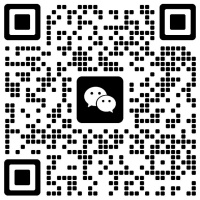COEN 233 Computer Networks - Programming Assignments: Client-Server UDP Communication
Programming Assignments
COEN 233 Computer Networks
General Guidelines
➢ Programming projects are individual assignments, each student should write his/her own code.
➢ Each project requires a demo, during which the student should explain how the code works.
➢ Demos are part of the grade. The student only will receive full credit if demo has correct results.
➢ In addition to the demo, each student should submit the source code, input/output files, and a README.txt file containing instructions on how to compile and run your source code.
➢ The program should be turned in on or before deadline; demo must be performed on or before the deadline but after the program files have been turned in.
Program assignment 1:
Client using customized protocol on top of UDP protocol for sending information to the server.
Communication between one client and one server:
Design a protocol with the following primitives:
Start of Packet identifier ….. 0XFFFF
End of Packet identifier ….. 0XFFFF
Client Id……….Maximum 0XFF (255 Decimal)
Length ……….. Maximum 0XFF (255 Decimal)
Packet Types:
DATA…. ………….……….0XFFF1
ACK (Acknowledge)……….0XFFF2
REJECT…………………….0XFFF3
Reject sub codes:
REJECT out of sequence…………….0XFFF4
REJECT length mismatch…………...0XFFF5
REJECT End of packet missing……..0XFFF6
REJECT Duplicate packet…………...0XFFF7
Data Packet Format:
ACK (Acknowledge) Packet Format:
REJECT Packet Format:
Procedure:
The client sends five packets (Packet 1, 2, 3, 4, 5) to the server.
The server acknowledges with ACK receive of each correct packet from client by sending five ACKs, one ACK for each 5 received packets.
The client then sends another five packets (Packet 1, 2, 3, 4, 5) to the server, emulating one correct packet and four packets with errors.
The server acknowledges with ACK receive of correct packet from client, and with corresponding Reject sub codes for packets with errors.
The client will start an ack_timer at the time the packet is sent to the server, if the ACK (Acknowledge) for each packet has not been received during ack_timer period by client before expiration of timer then client should retransmit the packet that was sent before.
The timer can be set at 3 seconds (recommended) and a retry counter should be used for resending the packet. If the ACK for the packet does not arrive before the timeout, the client will retransmit the packet and restart the ack_timer, and the ack_timer should be reset for a total of 3 times.
If no ACK was received from the server after resending the same packet 3 times, the client should generate the following message and display on the screen:
“Server does not respond”.
Error handling:
NOTE: All four error handling messages below should be simulated and displayed on the screen, the error response messages should be included in a (.pdf, .png, .jpg) file and turned in with your source code.
ACK error handling:
If the ACK timer expires and the ACK from server has not been received by client, an error message should be displayed on the screen by client prior to resending the packet.
Reject error handling with sub code:
Case-1: An error message should be displayed on the screen when the received packet at server is not in sequence with expected packet from client; an error message should be generated by server and sent to client.
For example, if server receives packets 0, 1 and then 3, packet 3 is out of sequence because the server is expecting the packet 2 after receiving the packet 1. The server will not increment the expected sequence number until packet 2 has been received.
Case-2: The server receives a packet which its length field does not match the length of data in the payload’s field, an error message should be generated by server and send to the client.
For example, if the length field of a received packet indicates the data payload is 125 bytes, but the actual payload is only 12 bytes, this packet has a length mismatch error.
Case-3: The server receives a packet which does not have the End of Packet Identifier, an error message should be generated by server and send to the client.
For example, if the last byte of the packet is xFFF0, this packet has a missing end of packet identifier error.
Case-4: The server receives a duplicated packet (sequence number), an error message should be generated by server and send to the client.
For example, if server receives packets 0, 1 and then packet 1 again, the second packet 1 is a duplicate packet, the server will not increment the expected sequence number.
Program assignment 2:
Client using customized protocol on top of UDP protocol for requesting identification from server for access permission to the cellular network.
Communication between one client and one server:
The client requests access information from server; the server will verify the validity of the request and will respond accordingly.
The communication between client and server will use the ack_timer, which was described in the first program assignment.
For the program assignment 2 you can imagine client’s software module is acting on behalf of a cell phone.
The client’s software module sends the request for identification of its device in a packet to the server; the packet has the following information:
Access permission request packet format:
Start of Packet identifier ….. 0XFFFF
End of Packet identifier. ….. 0XFFFF
Client Id……………………………...Maximum 0XFF (255 Decimal)
Acc_Per (Access Permission)….…….0XFFF8
Length ……………………………….Maximum 0XFF (255 Decimal)
Source Subscriber No………………..Maximum 0XFFFFFFFF (4294967295 Decimal)
Technology:
2 G…………...02
3 G…………...03
4 G…………...04
5 G…………...05
Server opens and reads a file named “Verification_Database.txt”, the contents of this file will be saved on the server, which contains the Subscriber’s Number, Technology, and payment status (paid = 1, not paid = 0).
Verification Database Format:
Subscriber Number Technology Paid
408-554-6805 04 1 (1 paid)
408-666-8821 03 0 (0 not paid)
408-680-8821 02 1 (1 paid)
After verifying the content of Identification request packet with the content of the Verification_Database.txt file, one of the following messages will be generated by the server:
Subscriber has not paid message:
Start of Packet identifier ….. 0XFFFF
End of Packet identifier. ….. 0XFFFF
Client Id…………………….Maximum 0XFF (255 Decimal)
Not paid…. ………….….….0XFFF9
Length …………………….. Maximum 0XFF (255 Decimal)
Source Subscriber No………Maximum 0XFFFFFFFF (4294967295 Decimal)
Technologies:
2 G…………...02
3 G…………...03
4 G…………...04
5 G…………...05
Subscriber does not exist on database message:
Consider two cases in which the subscriber does not exist:
1. Subscriber number is not found.
2. Subscriber number is found, but the technology does not match.
Start of Packet identifier ….. 0XFFFF
End of Packet identifier …... 0XFFFF
Client Id…………………….Maximum 0XFF (255 Decimal)
Not exist…. ………….….….0XFFFA
Length …………………….. Maximum 0XFF (255 Decimal)
Source Subscriber No………Maximum 0XFFFFFFFF (4294967295 Decimal)
Technologies:
2 G…………...02
3 G…………...03
4 G…………...04
5 G…………...05
Subscriber permitted to access the network message:
Start of Packet identifier ….. 0XFFFF
End of Packet identifier .….. 0XFFFF
Client Id…………………….Maximum 0XFF (255 Decimal)
Access_OK ………….….….0XFFFB
Length …………………….. Maximum 0XFF (255 Decimal)
Source Subscriber No………Maximum 0XFFFFFFFF (4294967295 Decimal)
Technologies:
2 G…………...02
3 G…………...03
4 G…………...04
5 G…………...05


